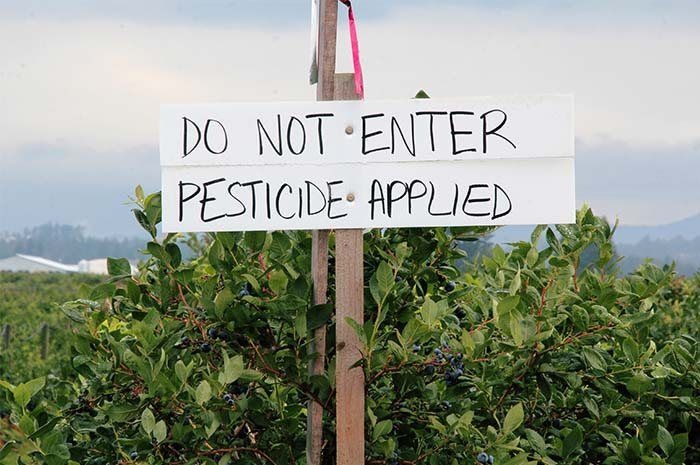The USDA Found Pesticide Residue On 85 Percent Of Foods Tested — Should You Be Worried?
Destructive insects are an unfortunate reality for commercial farmers, and for decades the agricultural industry has used both natural and chemical pesticides to protect their crops. The chemicals are dangerous to pests, but harmless to humans in small enough doses.
Based on scientific evidence and risk assessments, the United States Department of Agriculture has established safe limits on the amount of pesticide residue fruits and vegetables are allowed to retain. To test how strictly these standards are being followed, each year the USDA and the Pesticide Data Program produce an annual report analyzing the pesticide residue on 20 different commodity crops; most of these are fresh produce, but sometimes frozen foods or minimally processed foods like nut butters are incorporated in the survey.
The most recent report showed that of the 10,187 food samples tested across the 20 categories, 85 percent contained some form of pesticide residue.
Residue is not always the result of pesticides being directly applied to crops. It also can drift from one crop to another or remain in the soil after being used on a prior crop (which is why the federal government requires cropland to remain pesticide-free for at least three years before produce grown on it may be certified as organic). Chemicals aren't necessarily "bad" either; for example, most drinking water and even bleached, all-purpose flour is treated with chlorine.
Though the USDA alleviates our concerns by saying these foods are perfectly safe (and there is little science available to have us think otherwise), there are some unsettling notes in the report. DDT and DDE, two dangerous insecticides, were both banned by the United States in 1972, and as of 2004, have been banned in 170 countries around the world for their adverse effects on the environment, wild life, and human health. However, during testing, low-level residues of DDE were detected in 46.6 percent of spinach and 14.6 percent of potatoes, while trace amounts of DDT were found in 25.7 percent of spinach and 6 percent of potatoes.
The USDA stressed, however, that 15 percent of the products sampled had no detectable pesticide residue at all, and of those that did, 99 percent were within the pre-established safety limits.
